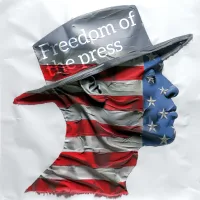The Good News: Less taxes to pay.
The Bad News: Less revenue for governmental services.
The New York State Property Tax Cap is the highest amount a local government (County, Town, City, or Village) or school can raise their tax levy from one fiscal year to the next. It
was aimed to control expanding property taxes which are a major local source of revenue for those agencies. The other local sources of revenue would be from Sales Tax, Occupancy Tax and local fees. The law states that the tax cap is either a 2% increase, or the most recent inflation rate, which ever is less. The governing board may exceed the cap if it passes a Tax Cap Override local law by a “Super Majority” (60%) vote. For a seven person board, it will need to have five votes to pass an Override Law.
There are limited, narrow exclusions to the tax cap, including certain costs of significant judgments arising out of tort actions and unusually large year-to-year increases in pension contribution rates. Recently the value of property which has a PILOT (Payment-in lieu-of-taxes) has been excluded from the tax cap.
Don’t forget the State is now issuing Tax Rebate Checks to property tax payers who reside in municipalities that keep their budget tax levy at or below the Tax Cap.
Most New York State Villages’ Fiscal Years run from June 1 to May 31. They need to have their budgets developed and passed by May 1 to have the tax bills sent by June 1. Villages will start developing their budgets soon.
For Villages the 2012-13 and 2013-2014 inflation rates were over 2%, so they could raise their tax levy  by 2%. The 2014-2015 inflation rate was 1.48%, and that became the tax cap for Village budgets. The Villages Tax Cap for our present budget (2015-2016) was 1.68%.
by 2%. The 2014-2015 inflation rate was 1.48%, and that became the tax cap for Village budgets. The Villages Tax Cap for our present budget (2015-2016) was 1.68%.
This week Villages received their New York State Tax Cap notices. The inflation rate for next year’s Village budgets is 0.12%!
Yes, in order to meet or stay under the tax cap the Villages in New York State can only raise taxes a bit more than one-tenth of one percent. Penn Yan’s 2015-16 tax levy was approximately $2.8 million. If the Penn Yan Village Board is to meet the State’s Tax Cap, their budget’s tax levy can not be raised by more than approximately $3,400.
Even if the Village leaders have kept their employees’ salary raise to one percent (plus related benefits) that would wipe out the tax cap increase. It doesn’t leave much money to maintain basic services, let alone doing preventive maintenance, upgrading old infrastructure, or improving services.
Local Village Boards will will face a dilemma. They are always concern about tax increases, and would like to stay within the tax cap. They also want to maintain or improve services to their constituents. Don’t be surprised if a lot of Villages override their tax cap this year.
Villages are just the beginning. The Town and Counties budgets, which goes into affect January 1 had a Tax Cap limit of 0.73%. Schools, whose budgets are voted on in May have not received their increase limit yet. How can their tax cap be much larger than Villages? For a chart to see the history of the tax caps rates follow this link.
When the Tax Cap law was created it in 2011, it was scheduled to expire in 2016. Polls show that 70% New Yorkers favor the it.. The feeling is that it is working since the property tax increases are leveling out. Many, including Governor Cuomo, want to make the tax cap permanent. Others want to tweak it. One suggestion is to have the Cap be a real 2% cap and not tied to the inflation rate. That is what Albany has done on state spending. Another suggestion is to exclude the cost of improving infrastructure from the cap.
The Legislature decided not to make it permanent, but to extend the Property Tax Cap through 2020. That gives our state legislators time to study how the low tax cap limits the local governmental services, and how it affects our economy.
Rich Stewart, the author of this article, is a Penn Yan Village Trustee.

